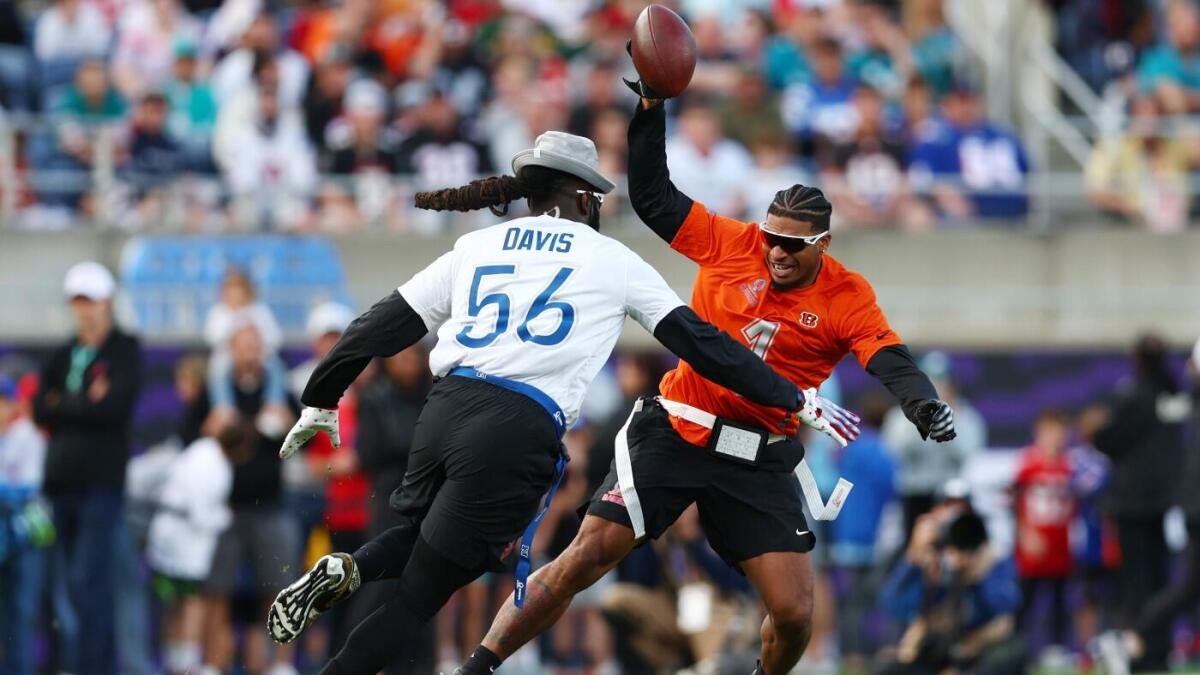The Integration of NFL Players in Olympic Flag Football: A New Frontier in Sports
Introduction: A Game-Changer for Football and the Olympics
The announcement that NFL players will be allowed to compete in flag football at the 2028 Los Angeles Summer Olympics is a groundbreaking development that seamlessly melds two distinct sporting cultures: the globally revered Olympic tradition and the uniquely American brand of football. This fusion doesn’t just add a new sport to the Olympic roster; it signals a shift in how sports evolve, engage global audiences, and embrace innovation. Exploring the nuances behind this decision reveals a complex interplay of strategic ambitions, athlete considerations, and broader implications for international sports culture.
NFL’s Green Light: Navigating a New Sports Landscape
The unanimous vote by NFL owners to permit active players’ participation in Olympic flag football highlights the league’s readiness to broaden its global influence while preserving its core interests. This decision is not a casual nod; it followed nearly two years of dialogue illustrating careful deliberation around logistics, safety, and competitive integrity.
Key to this approval is the balance struck between opportunity and caution. Restricting the number of players per team to one Olympian, coupled with rigorous safety protocols, reflects an understanding of the NFL’s priorities—minimizing player risk while endorsing a high-profile, international showcase. Commissioner Roger Goodell’s framing of Olympic participation as an honor underscores the cultural weight the NFL places on this venture.
Flag Football’s Olympic Arrival: A Sport Tailored for Today’s Audiences
Flag football’s Olympic induction fits into a larger trend of the Games adapting to contemporary tastes—favoring fast-paced, inclusive, and accessible sports that resonate with younger demographics worldwide. Unlike traditional tackle football, flag football offers a non-contact alternative that lowers injury risks while retaining the sport’s competitive and strategic essence.
Its global trial at the 2022 World Games proved flag football’s potential to captivate diverse audiences, paving the way for its Olympic debut. Hosting this event in Los Angeles, a city with deep American football roots, optimizes local enthusiasm and global viewership. The NFL’s involvement adds an extra layer of gravitas, promising a blend of world-class athleticism and entertainment.
Crafting the 2028 Olympic Flag Football Roster: Talent Meets Strategy
The prospect of NFL stars like Patrick Mahomes and Ja’Marr Chase representing the U.S. in flag football is electrifying but fraught with practicalities. Selection processes will navigate the fine line between player availability, NFL obligations, and suitability for flag football’s distinct style.
The envisioned team composition favors versatility and agility, qualities embodied by emerging athletes like Malik Nabers and defensive dynamo Micah Parsons. Such players bring the speed, quick reflexes, and decision-making skills essential for a sport that replaces tackles with flag pulls. The need to protect players from injuries in a less familiar format and secure their commitment to Olympic participation will shape the final roster decisions.
Addressing Challenges: League Cohesion and Player Welfare
Despite the excitement, the initiative confronts internal hurdles. Concerns over scheduling conflicts, injury risks, and possible disruptions to the NFL’s offseason spotlight the complexity of integrating Olympic play into a professional football calendar.
Negotiations with the NFL Players Association seek to navigate these issues, striving for arrangements that respect player health and contractual norms while fostering new opportunities. The league’s precautionary policies—limiting roster sizes for Olympic tryouts and establishing safety protocols—signal a pragmatic approach to risk management.
Forward Momentum: The Path Toward 2028
With formal approval secured, the NFL, NFLPA, and U.S. Olympic Committee are poised to finalize operational details encompassing selection trials, eligibility criteria, and training regimens. This emerging structure aims to create a high-caliber national team that blends proven NFL veterans with rising stars equipped for international play.
Marketing efforts will play a critical role in elevating the sport’s profile, leveraging NFL celebrities to attract global audiences and generate buzz for both the Olympics and the league. This symbiotic promotion stands to fuel fan engagement and redefine football’s cultural footprint.
Wider Implications: Transforming American Football and Olympic Sport
The participation of NFL players in Olympic flag football extends beyond mere competitive novelty:
– International Growth of American Football: By championing flag football—an accessible and contact-free variation—the NFL fosters grassroots growth globally, particularly in regions where traditional football struggles to gain a foothold.
– Enhancing Olympic Appeal: Flag football introduces an energetic, audience-friendly sport that blends athleticism with star power, potentially increasing Olympic viewership and diversifying the Games’ sporting portfolio.
– New Avenues for Athletes: For NFL players, this opens unprecedented avenues to complement their professional careers with Olympic distinction, enriching their legacy and inspiring aspirants worldwide.
– Blueprint for Collaboration: This initiative could become a model for future partnerships between professional leagues and the Olympic movement, demonstrating how elite sport and Olympic ideals can coexist and amplify one another.
Conclusion: An Exciting Convergence Promising Lasting Impact
The decision to integrate NFL players into Olympic flag football is more than an event; it is the dawn of a new era that reimagines the boundaries of football and international sport. As the world anticipates the 2028 Games, the fusion of Olympic spirit with NFL prowess promises to invigorate fan enthusiasm, broaden football’s reach, and set a precedent for adaptive, globalized sporting experiences.
Through speed, skill, and the simple waving of flags, this evolution underscores how sports can innovate without losing their soul, inspiring generations and reshaping athletic culture on a global scale.











